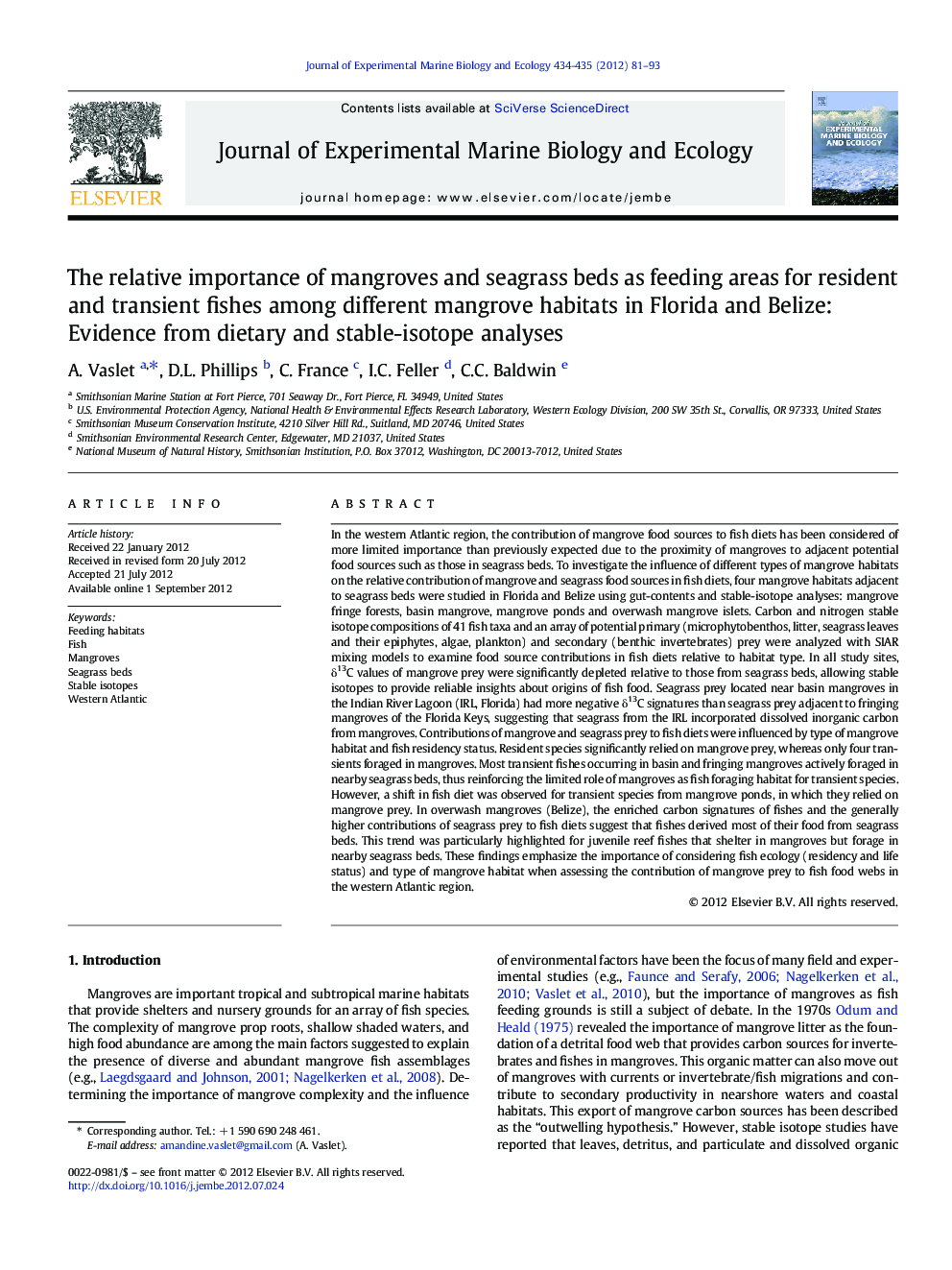| کد مقاله | کد نشریه | سال انتشار | مقاله انگلیسی | نسخه تمام متن |
|---|---|---|---|---|
| 4395933 | 1618439 | 2012 | 13 صفحه PDF | دانلود رایگان |

In the western Atlantic region, the contribution of mangrove food sources to fish diets has been considered of more limited importance than previously expected due to the proximity of mangroves to adjacent potential food sources such as those in seagrass beds. To investigate the influence of different types of mangrove habitats on the relative contribution of mangrove and seagrass food sources in fish diets, four mangrove habitats adjacent to seagrass beds were studied in Florida and Belize using gut-contents and stable-isotope analyses: mangrove fringe forests, basin mangrove, mangrove ponds and overwash mangrove islets. Carbon and nitrogen stable isotope compositions of 41 fish taxa and an array of potential primary (microphytobenthos, litter, seagrass leaves and their epiphytes, algae, plankton) and secondary (benthic invertebrates) prey were analyzed with SIAR mixing models to examine food source contributions in fish diets relative to habitat type. In all study sites, δ13C values of mangrove prey were significantly depleted relative to those from seagrass beds, allowing stable isotopes to provide reliable insights about origins of fish food. Seagrass prey located near basin mangroves in the Indian River Lagoon (IRL, Florida) had more negative δ13C signatures than seagrass prey adjacent to fringing mangroves of the Florida Keys, suggesting that seagrass from the IRL incorporated dissolved inorganic carbon from mangroves. Contributions of mangrove and seagrass prey to fish diets were influenced by type of mangrove habitat and fish residency status. Resident species significantly relied on mangrove prey, whereas only four transients foraged in mangroves. Most transient fishes occurring in basin and fringing mangroves actively foraged in nearby seagrass beds, thus reinforcing the limited role of mangroves as fish foraging habitat for transient species. However, a shift in fish diet was observed for transient species from mangrove ponds, in which they relied on mangrove prey. In overwash mangroves (Belize), the enriched carbon signatures of fishes and the generally higher contributions of seagrass prey to fish diets suggest that fishes derived most of their food from seagrass beds. This trend was particularly highlighted for juvenile reef fishes that shelter in mangroves but forage in nearby seagrass beds. These findings emphasize the importance of considering fish ecology (residency and life status) and type of mangrove habitat when assessing the contribution of mangrove prey to fish food webs in the western Atlantic region.
► Dietary and stable isotope data were used to assess fish feeding patterns.
► Resident fishes significantly relied on mangrove prey.
► Most transient fishes from basin and fringing mangroves foraged in seagrass beds.
► Transient fishes from mangrove ponds foraged more on mangrove food sources.
► Juvenile reef fishes occurring in mangroves foraged in adjacent seagrass beds.
Journal: Journal of Experimental Marine Biology and Ecology - Volumes 434–435, 1 December 2012, Pages 81–93